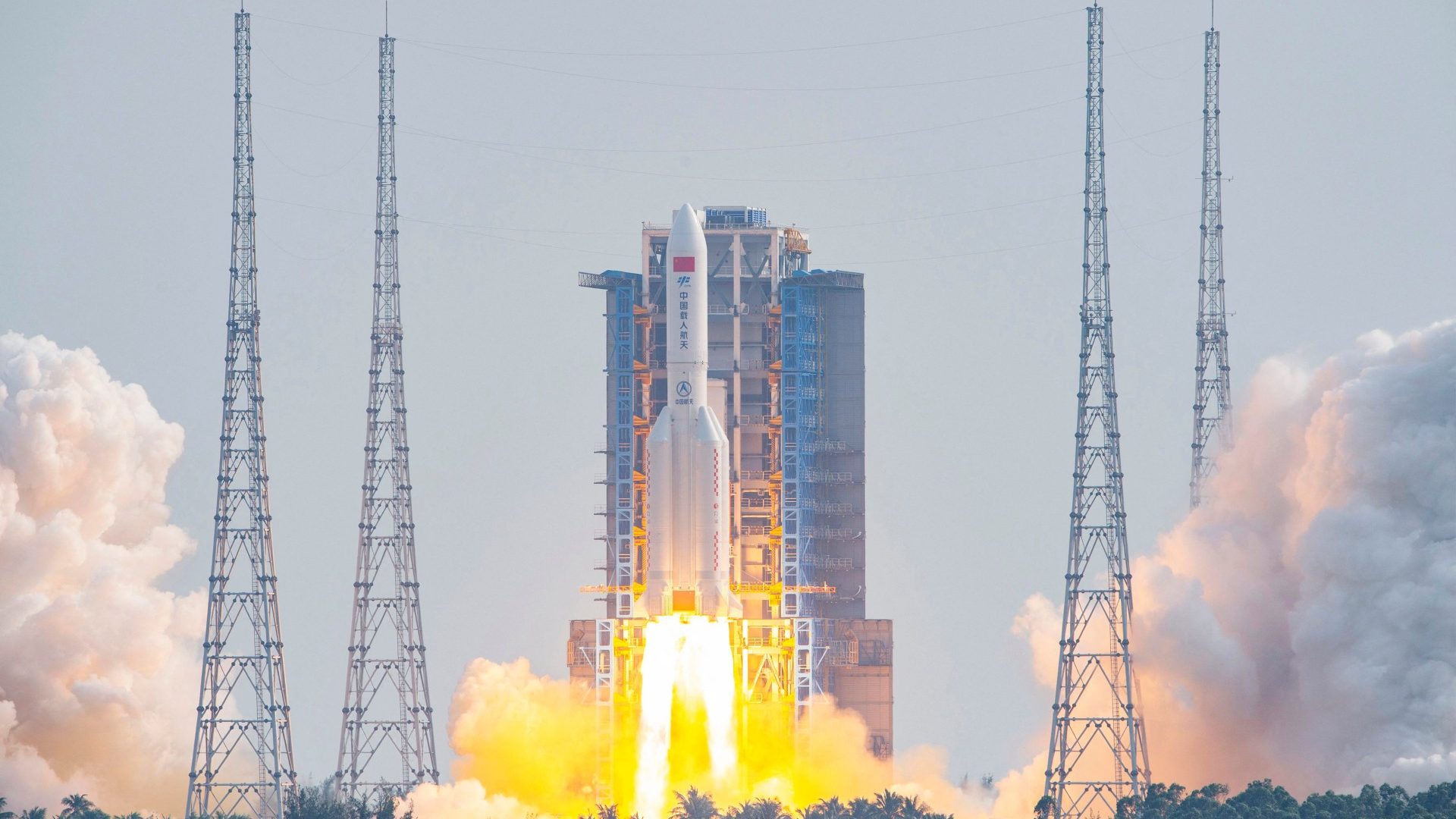(CNN) — Spain on Friday reopened areas of its airspace that were closed due to the downing of a Chinese space rocket.
Catalonia’s emergency center said Twitter The National Emergency Center informed him that all airspace restrictions related to the passage of the CZ-5B spacecraft were being lifted.
Earlier, Spanish air controllers announced the closure of airspace over airports in Catalonia and the Balearic Islands, Aragon and Navarra, after part of a Chinese rocket landed in the European country.
The airspace closure is expected to last at least an hour as part of the Chinese rocket orbits near these parts of Spain.
A step Bulletin The European Union Aviation Safety Agency has warned that part of the Long March 5B (CZ-5B) space rocket launched on October 31, 2022 may re-enter the Earth’s atmosphere.

A Long March 5B rocket carrying China’s Mengtian Science Module, the final module of the Tiangong Space Station, blasts off from the Wenchang Space Launch Center in south China’s Hainan Province on October 31, 2022. (Photo by Getty Images/CNS/AFP)
The material is estimated at 17 to 23 tonnes, making it “one of the largest pieces of debris to re-enter the atmosphere in recent years,” the agency said.
last year, Chinese rocket out of control It left orbit at the end of May, China’s space agency said.
Most of the rocket was “destroyed” upon re-entry into the atmosphere, the space agency said.
The rocket, about 30 meters tall and weighing nearly 22 tons, launched a portion of the new Chinese space station into orbit on April 29, 2021. After running out of fuel, the rocket dropped uncontrollably into space until Earth’s gravity pulled it away. Back on the ground.
In general, the international space community tries to avoid such scenarios. Most of the rockets used to lift satellites and other objects into space produce controlled repulsors that point at sea or in “grave” orbits that keep them in space for decades or even centuries.
But the Long March rocket was designed to “leave large fragments in low orbit,” Jonathan McDowell, an astrophysicist at Harvard University’s Center for Astrophysics, said at the time.
With information by Jackie Wattles and Paul LeBlanc
News in development


:quality(85)/cloudfront-us-east-1.images.arcpublishing.com/infobae/BH6NLAQGXJGADFWTENBUV7Z7RQ.jpg)
:quality(85)/cloudfront-us-east-1.images.arcpublishing.com/infobae/3GK63ATFOMFAYNUAQKUL4WUJFM.jpg)

:quality(85)/cloudfront-us-east-1.images.arcpublishing.com/infobae/SJ35ZLSJ5NB4BWVRJPSK74P7AQ.jpg)